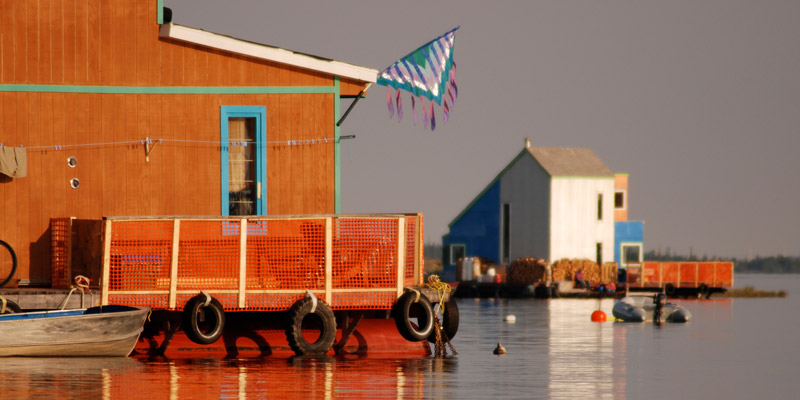Characterization and Modeling of Pathogen Risks in Groundwater of First Nations Communities
Principal Investigator - Asit Mazumder, Professor, University of Victoria (2007-2010)

Challenge
Safe drinking water is vital to human health and an increasing number of Canadian communities are dependent on groundwater for drinking. Groundwater resources are under greater population pressures and are increasingly more vulnerable to human activities such as agricultural practices, urban development and industrialization. Managing and understanding the health risks associated with source and distribution water of small and rural communities in Canada is a major challenge. This is a particular challenge to First Nation communities, as these communities are all rurally situated. Critical factors to sustaining the integrity and drinkability of groundwater in First Nation communities are identifying characteristics of waterborne pathogens and how prevalent they are in groundwater. Additional challenges include determining how various land-use activities impact groundwater and how variability in environmental and climate factors affects potential pathogen outbreaks.
The project team, led by Dr. Asit Mazumder, focuses on characterizing and modeling pathogen risks in the groundwater of nine First Nation communities in Canada.
Project
Within the context of nine First Nation communities, this project had four main objectives: 1) to identify, characterize and to measure prevalence of common waterborne pathogens in the groundwater sources and tap water, 2) to develop models which predict the prevalence of specific bacteria such as Campylobacter, Enterococci, Cryptosporidium and Giardia, 3) to determine the impacts various land-use activities have on fecal contamination of groundwater, and 4) to assess and model environmental and climatic factors that impact the viability of bacterial and pathogen outbreaks.
To achieve this there is a need for strong partnerships with the First Nation communities and the respective regional Environmental Health Officers. Capacity was built in each community through knowledge transfer, workshops, and training of at least one member from each community to participate in sample collection. Bi-weekly sampling begun in 2008 and upon spring snowmelt, samples were collected weekly. After 18 months of sampling, 272 samples were analyzed. Water samples were filtered and processed for fecal indicator bacterial (both E. coli and non E. coli coliforms). To identify sources of bacteria a molecular and statistical method, Bacteria Source Tracking, was utilized. Raw water and treated water samples were analyzed for nutrients (carbon, phosphorus, and nitrogen) and disinfectant by-products (Trihalomethane and Haloacetic acid).
This project found that in untreated groundwater, non-E. coli coliforms represented the majority of microorganisms detected in communities, while E. coli was generally not detected. Disinfectant by-products were found in throughout the sampling period. Nitrogen levels were always higher than total phosphorous throughout the study.
Outputs
- Creation the first comprehensive database that characterizes both source and distribution water quality for First Nation communities in Canada. This reliable database will contribute to the understanding and management of risks associated with waterborne diseases in small communities, and it represents a strategic tool that can assist managers and health officials to reduce pathogens.
- This project has trained 13 First Nation members and has provided participating communities with a tool to assess the risks of microbial and chemical health associated with groundwater.
- Participation in CWN Pathogens in Groundwater Research Consortium in Calgary, Alberta, 2008; EPA Symposium on Groundwater-Borne Infectious Disease, Etiologic Agents and Indicators in Washington DC, 2008; and international workshop on pathogens in porous media in Niagara on the Lake, Ontario, 2009.
- Upon approval from First Nation community partners, this research is to be published in peer-reviewed journals.
Outcomes
- Building capacity in First Nation community’s decision-making on the management of their water resources and their community health. It is the researchers involved in this projects intent that this partnership with First Nation communities will improve the management of water resources, improve the source-water environment, the quality of water and associated confidence on the quality of water.
- Changes in practice related to a new approach to detecting waterborne pathogens and bacteria.
- This research opens doors for new opportunities. The newly funded NSERC Research Network on Small Water Systems (Réseau-Waternet) is planning to use the projects results so that participating communities can assess the need for treatment optimization.




